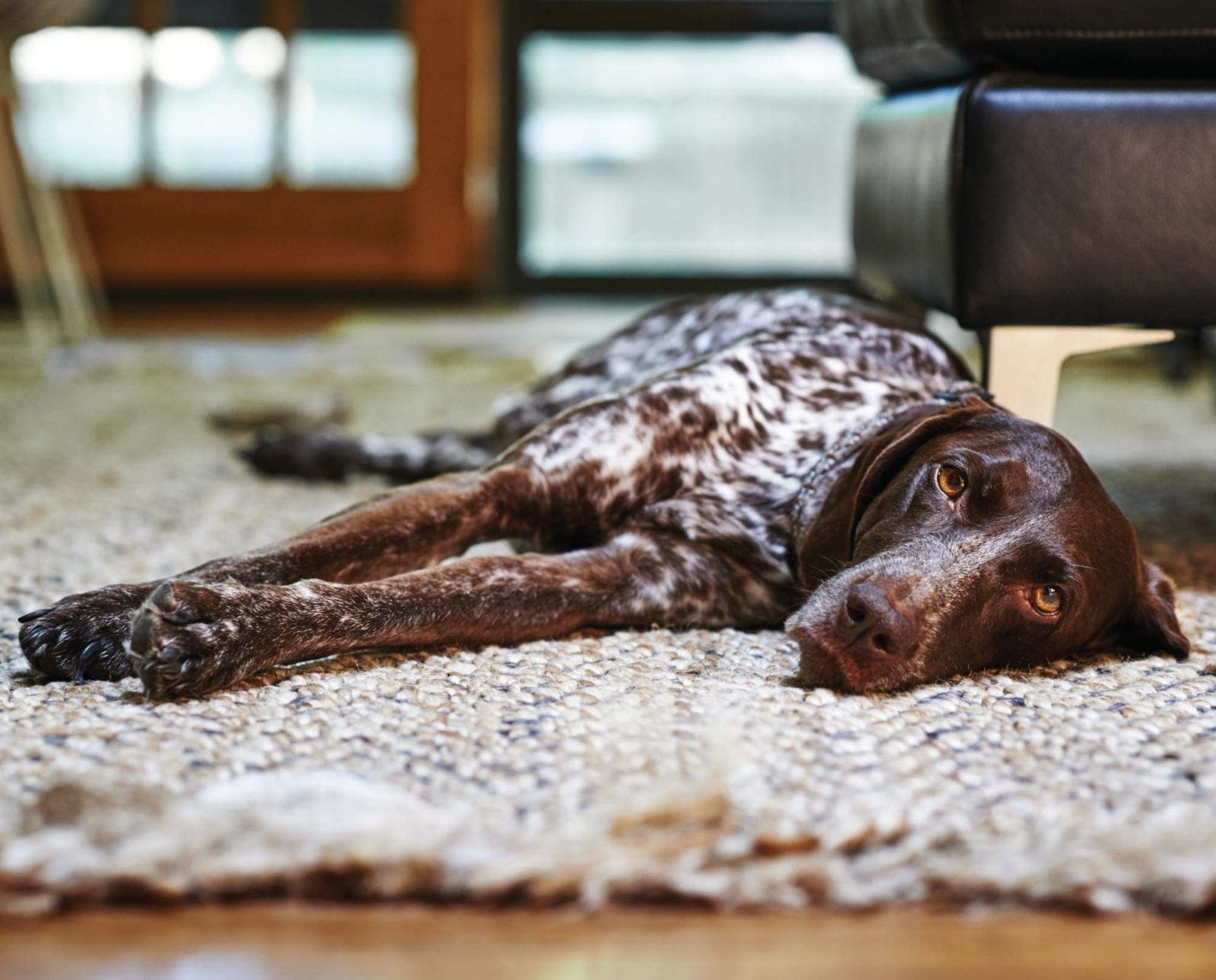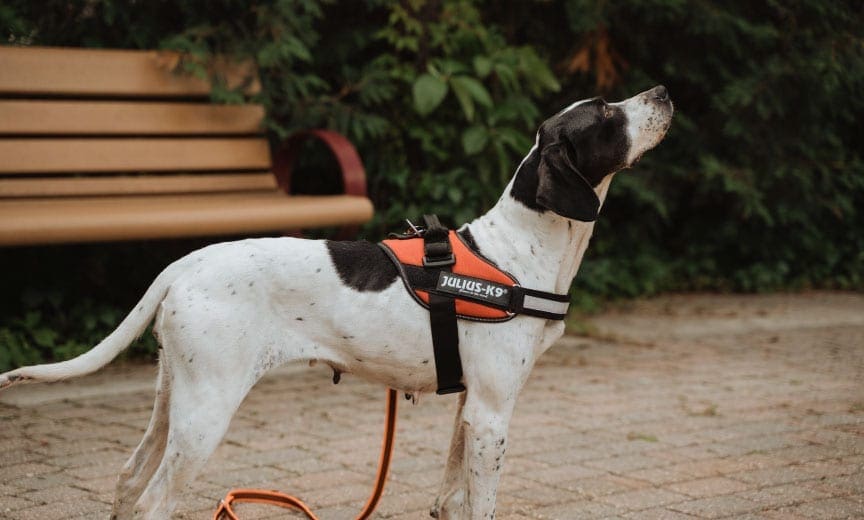Home » Hunting Dogs » Overcoming the Obstacles of Training a Bird Dog in the City
Overcoming the Obstacles of Training a Bird Dog in the City

Patrick Keating is a New Jersey native who discovered his…
Against all odds: a story of nothing stopping an aspiring bird hunter from becoming a hunter and training a bird dog in the city
When getting my first bird dog I went against every piece of advice that people give. I am no expert trainer and certainly don’t claim to be. I purchased my first bird dog while living in a 436-square-foot studio apartment just across the Hudson from New York City with almost no research on the pedigree of my dog. The only conformation title in Kona’s three-generation pedigree from the American Kennel Club (AKC) is a junior hunt title on one of her grandparents.
She wasn’t purchased from a breeder, but a dog broker, with whom we’ve had no contact since buying the dog. I hadn’t read anything about training, nor did I have a plan. The only person I knew that had previously hunted with a German shorthaired pointer was a neighborhood friend and his father, whose main piece of advice to me at the time was to learn how to train my dog by watching Youtube videos.
The other issue is that I had never been on an bird hunt but the idea of escaping the city for an upland hunt was exciting. Matter of fact, I had never killed anything before in my life. The truth is, I couldn’t even afford my dog at first, buying her from the broker using PayPal credits. Looking back, the only thing I knew was that I wanted this more than anything else in the world. There was absolutely nothing that was going to stop me from breaking into the world of upland hunting with a floppy-eared friend by my side.
That being said, I got very lucky with where we are today. About one year into owning my dog, Kona had only been trained on basic commands such as sit, stay, come and down. That’s when we ran into a stranger walking down the street with a young Weimaraner puppy. My girlfriend and I crossed the street to go talk with them and, to our surprise, they were the first people we’d met that intended to train their dog to hunt.
Over the past year we had run into a handful of sporting breeds, but all of them were strictly pets. The couple was extremely nice and just as excited as we were to hear that there was another person in the neighborhood looking to break into upland hunting. We exchanged numbers and the man referred me to his dog trainer, who was the only gun dog trainer known to us in northern New Jersey. Without this interaction there would have been absolutely no way for me to learn what I wanted out of my dog, let alone how to get her to understand what was being asked of her.
A mentor is an invaluable resource when you have questions and the only way to accelerate your learning process in training a dog. This is especially true when living in the city where you can’t just walk out your back door, plant some birds, and give them the training they need. However, besides our weekly trip out to my mentor’s gun club — which was more than an hour’s drive — I’ve figured out a way to become more opportune in training my dog in the city.

Gun dog training began by doing everything possible from inside my apartment. My father and my uncles helped me build a “whoa table” in order to work on Kona’s steadiness within the confines of my apartment. The table just barely fit up the stairwell of the third-floor walkup and spanned nearly the entire length of our apartment, but it did the trick. What a comical sight it would have been for the neighbors to witness me tossing around a frozen chukar in front of a year-old pup standing on a table — that is, if the blinds had been left open.
Once Kona was steady enough on the table, creativity set in as we progressed to the floor, and eventually outside. Surely, I would have been on the receiving end of some glares — if not having a conversation with the police — had I been seen tossing a frozen bird around in front of my dog at the local park. If I wanted to avoid an involuntary visit to the nearest mental health facility, I had to figure out a different way.
The work began with my dog in the park and on walks by placing Kona on whoa with just the normal distractions of the city. The stimulation of people walking by, cars honking their horns, food trucks and sirens proved to be enough of a distraction to garner the opportunity to correct my dog when she took a few steps. We moved on from there by adding surprise elements to it. I would whoa Kona on the sidewalk near a fence, or something that made it possible to inconspicuously attach her leash in order to keep her safe from passing cars. Toys — or just about anything nearby such as rocks and sticks — would then be added in by tossing the item low and fast from the rear, to surprise her, then clapping as loud as possible in an attempt to simulate gunfire.
The final phase was to use the wildlife we had around us. Now I feel the need to encourage anybody that may attempt this next step to research their own state and local wildlife harassment laws. This is something that must not be taken too far; we strictly used the opportunities presented to us in everyday interactions as a teaching tool, and did not repeatedly seek out and flush these birds.
The wild pigeons that scurried around the sidewalk and in the park searching for food scraps on the ground were what we had at our disposal. Although this method would rob my dog of the opportunity to use her nose to seek out and point the bird, it would help us with steadiness beyond the flush.
Having already seen Kona point birds, this was a way for me to get more repetitions on the whoa command during the week, in between field sessions. Once my dog acknowledged the pigeon’s presence on the sidewalk or in the park, she would get closer until she began to creep. At this point she would be given the whoa command. I would leave her side and continue to walk toward the flock of pigeons. If she crept along with me, she would be corrected and placed back in whoa. Continuing toward them, they would eventually flush and I would clap as loud as possible. This, too, proved stimulating enough to get my pup to leap forward, which afforded another opportunity to correct her.
I use these everyday interactions on the street as another learning experience, as a way for me to make Kona understand that whoa means don’t move a step. Whether a bird flushes or a truck is barreling toward us on a nearby road, when whoa is heard those four paws go on standby.
The take home from my experiences thus far is that we need to be more opportune and creative in training, whether that be for basic commands or a specific task. We can use everyday life as the teacher to help us better train our dogs, no matter the objective. Another benefit to doing so is that it helps us fit several small training scenarios into our busy life. Having several short training scenarios daily, rather than only one long session weekly, is ideal because it affords the trainer more opportunities to make a behavioral adjustment, which is one small step closer towards the end goal. Life is a game of inches, and as long as you’re moving in the right direction each step forward is a big win.
Patrick Keating is a New Jersey native who discovered his love for hunting while away at college in Maryland. He has always had a passion for shooting, dogs, and the outdoors, but never experienced them together. As a first-generation hunter he dove headfirst into the sport after getting his German Shorthaired Pointer. Now he indulges his passion in every way that he can, reading, writing, and consuming, all things related to his love of bird dogs. He enjoys soaking up the wisdom of those who came before him, in a never-ending attempt to expand his knowledge. In the future he hopes to begin testing his dog in the off season so that he can better his skill as a dog handler and trainer. He also looks forward to sharing his joy with anybody and everybody who wishes to join him in the field or the blind.





Well done – great attitude! Keep us posted on your field exploits with Kona.
nicely done!
Once you understand the final.desired outcome and how to break down the steadiness sequence, you can get creative and progress your dog in even very urban environments. In suburban areas, people may have a yard, but no live birds. Pigeons are a great learning tool!
Bought a bird dog before ever going on a hunt?? Never heard that one before. Guess you made it work!
The fact you have only street pigeons on which to work your dog is a blessing, not a limitation. Back in the seventies, I had a small flock that would visit our suburban street corners now and then. Yong setter Patty would point and stalk on leash and became a great grouse dog quickly that fall. I’d have ignored those pigeons except for Buron Spiller telling of starting a dog on pigeons hanging around a feed mill.Read about it in his classic Drummer in the Woods, pursuing pigeons along village streets.